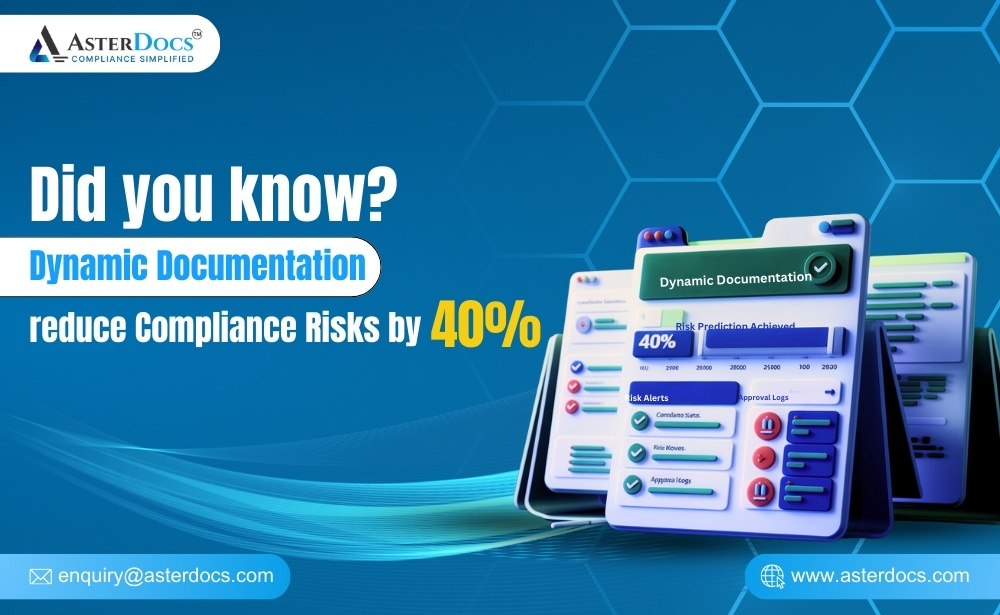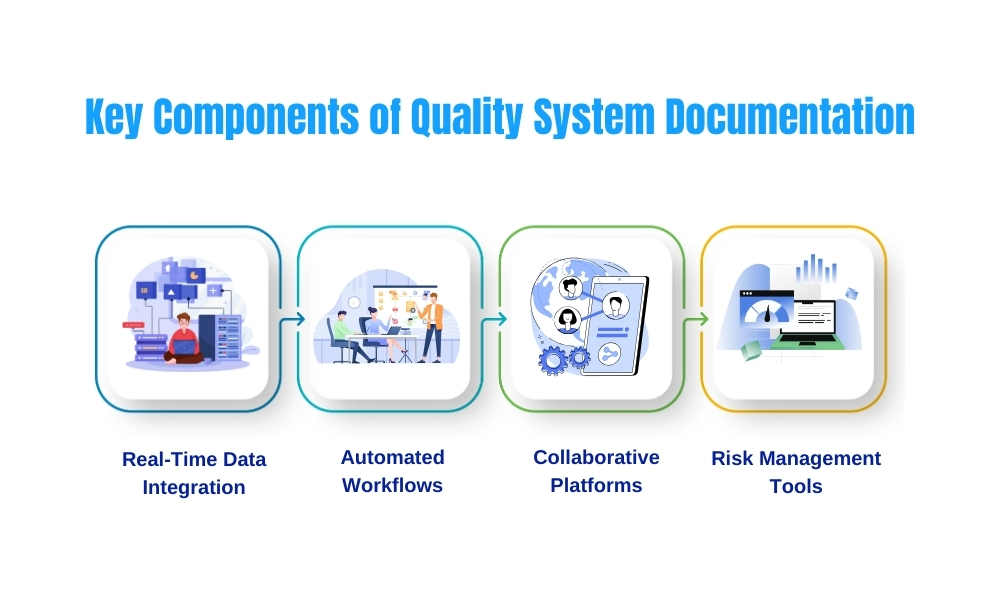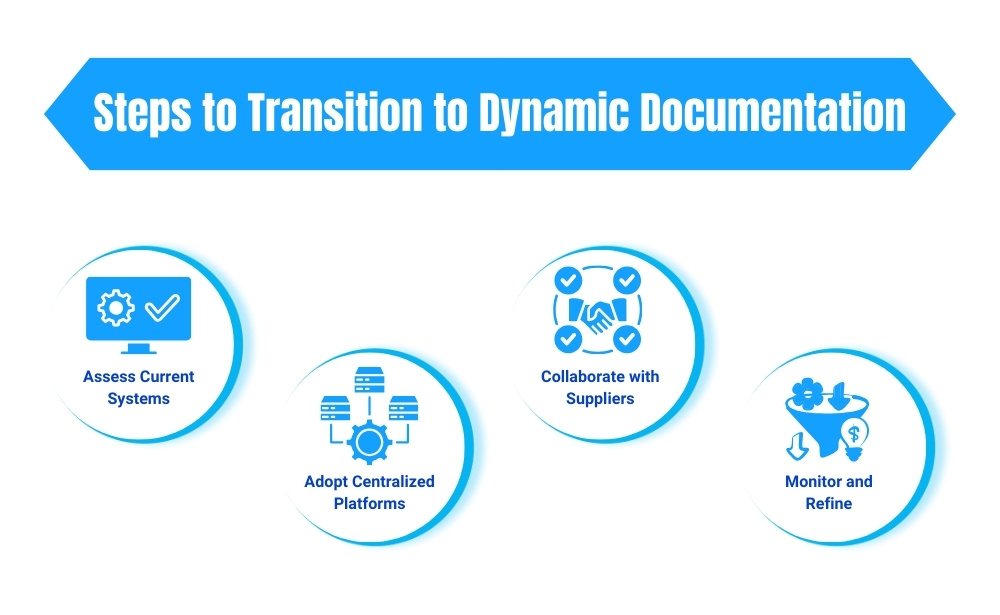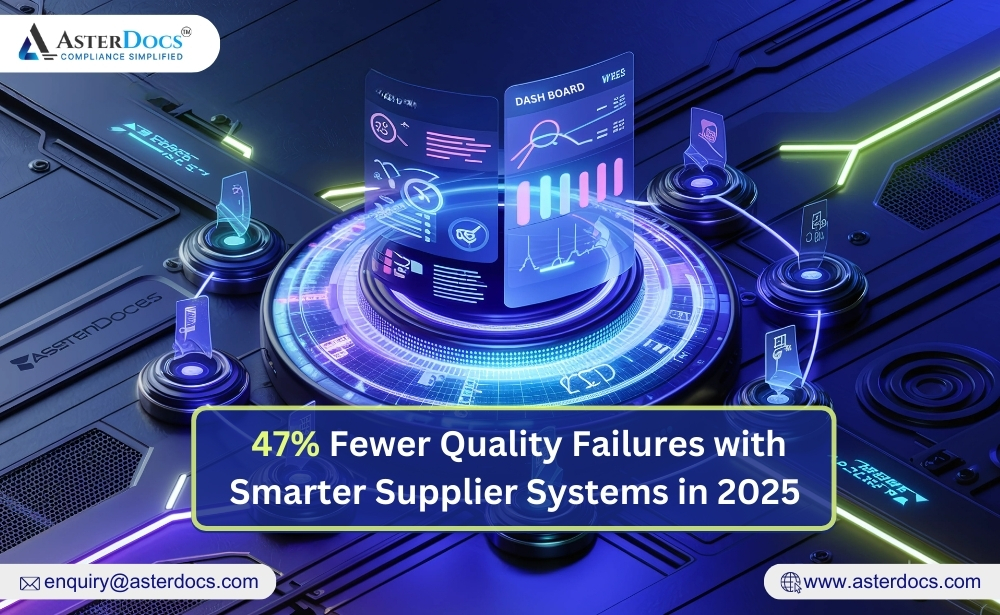Traditional quality system documentation is becoming less effective as supply chains grow more interconnected and data-driven. Rigid systems and static records cannot keep up with the real-time metrics needed to maintain compliance and ensure supplier quality. This shift requires businesses to embrace dynamic approaches to documentation, especially in the context of supplier quality management.
Dynamic quality system documentation enables organizations to stay agile, address risks proactively, and respond to the ever-changing demands of global supply chains.
Why Static Quality Documentation Falls Short
Static documentation is often characterized by slow updates, manual processes, and siloed information. These limitations create several challenges, including:
- Inaccuracy: Outdated supplier data increases the risk of non-compliance.
- Delayed Responses: A lack of real-time insights makes it harder to address supplier issues promptly.
- Regulatory Risks: Static systems struggle to keep up with frequent regulatory changes.
These challenges can lead to inefficiencies, financial losses, and missed opportunities, particularly in industries with strict compliance requirements. The need for dynamic, adaptive documentation has never been clearer.
Key Components of Dynamic Quality System Documentation
Dynamic quality system documentation relies on several core elements to adapt to real-time supplier data effectively. These include:
1. Real-Time Data Integration
Integrating supplier data into documentation systems ensures updates are accurate and timely. Metrics such as delivery timelines, compliance rates, and defect rates provide actionable insights to guide decisions.
2. Automated Workflows
Automated processes reduce the risk of human error and streamline routine tasks. For example, supplier scorecards can be automatically generated and updated based on real-time performance metrics.
3. Collaborative Platforms
Dynamic documentation thrives on collaboration. By creating centralized platforms, suppliers and stakeholders can access and update information in real time, fostering accountability and transparency.
4. Risk Management Tools
Real-time documentation allows businesses to flag and address potential risks. Tools such as dashboards and alerts can highlight gaps in supplier compliance, ensuring quick action before minor issues escalate.
How Supplier Quality Management Benefits from Dynamic Documentation
Dynamic documentation and supplier quality management are deeply intertwined. Supplier quality management focuses on evaluating, maintaining, and improving supplier performance. Dynamic documentation complements this by providing:
- Enhanced Visibility: A clear view of supplier performance metrics over time.
- Streamlined Qualification Processes: Faster onboarding and evaluation of new suppliers.
- Compliance Assurance: Automatic updates ensure all supplier documents meet regulatory standards.
- Proactive Issue Resolution: Real-time monitoring identifies and mitigates risks before they impact operations.
By leveraging dynamic documentation, organizations can create a stronger supplier network while reducing compliance risks.
Steps to Transition to Dynamic Documentation
Shifting to dynamic quality system documentation may seem daunting, but breaking it into actionable steps can simplify the process:
1. Assess Current Systems
Evaluate existing documentation practices and identify gaps. Determine which processes can be automated or integrated with real-time data.
2. Adopt Centralized Platforms
Implement a centralized system where supplier data, metrics, and documentation can coexist. This eliminates redundancies and ensures consistency across teams.
3. Collaborate with Suppliers
Communicate expectations clearly and provide suppliers with tools or training to align with new documentation requirements.
4. Monitor and Refine
Set up real-time dashboards to track performance and compliance. Use these insights to refine workflows and documentation practices.
Advanced Use Cases of Dynamic Documentation
Dynamic quality system documentation offers benefits beyond compliance. Advanced use cases include:
- Predictive Analytics: Using supplier data trends to predict and prevent quality issues.
- Sustainability Tracking: Monitoring supplier adherence to environmental standards.
- Cross-Border Compliance: Simplifying compliance with regulations across multiple regions.
Overcoming Challenges in Implementing Dynamic Documentation
While the advantages of dynamic documentation are clear, the transition comes with its own challenges:
- Data Overload: Managing large volumes of real-time data can be overwhelming.
- Solution: Focus on actionable metrics and use filtering tools to prioritize essential information.
- Supplier Resistance: Some suppliers may resist new systems or processes.
- Solution: Engage suppliers early, provide training, and emphasize the mutual benefits of improved documentation.
- Integration Complexities: Legacy systems may not support real-time updates.
- Solution: Gradually transition to cloud-based platforms to improve scalability and flexibility.
Conclusion
Dynamic quality system documentation is the backbone of efficient supplier quality management. It enables businesses to remain proactive, compliant, and competitive in a rapidly changing environment. Transitioning to this approach ensures that supplier data becomes an asset rather than a challenge.
To learn more about how AsterDocs can help you streamline your quality system documentation and supplier management, visit our website now.















